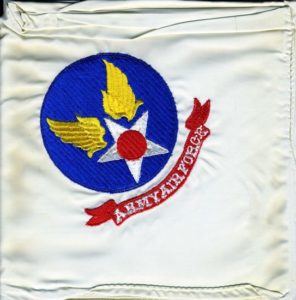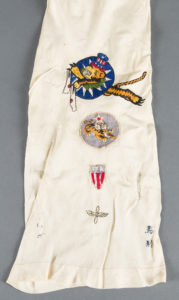 They say fashion and comfort are two different things and mostly it’s the truth. But what’s also true is that fashion changes continuously. You can go back a decade and find a marked contrast in what people deemed to be acceptable clothing and in the way they decorated their bodies. Sometimes a few fashion items last long after the typical duration of trends and transcend into a universal role. One such example is the pilot’s scarf.
They say fashion and comfort are two different things and mostly it’s the truth. But what’s also true is that fashion changes continuously. You can go back a decade and find a marked contrast in what people deemed to be acceptable clothing and in the way they decorated their bodies. Sometimes a few fashion items last long after the typical duration of trends and transcend into a universal role. One such example is the pilot’s scarf.
Now a commonplace item that comes in a range of different fabrics and uniquely designed prints, the scarf can be found neatly tucked around the necks of men and women as a show of luxury and wealth. However, many people aren’t aware of how this elegant piece of clothing once served a very practical function during the First World War.
Almost a century ago, we witnessed the definitive entry of airplanes as one of the most effective tools for conducting human warfare. They effectively expanded each country’s reach of devastation over thousands of miles and took the battle to the skies. Although, no match for the fighter jets of today, the early combat airplanes of WWI still managed to cause significant damage according to their offensive capabilities.
Some of the first aircraft wasn’t even equipped with purpose-built weaponry of any kind – forcing the crew to rely on traditional firearms like pistols, rifles and even grenades. They had open cockpits that meant they couldn’t fly at very high altitudes because there was nothing to shield the crew from extremely low temperatures and lack of oxygen. There was no high-tech radar to spot flanking enemy aircraft forcing pilots to strain their necks in order to manually scan the skies.
 In short, to fly and engage in combat at such heights, the pilot and crew needed to function flawlessly. This required that they stay warm, and that’s where the pilot’s scarf came in. The first practical use was its ability to block cold winds from seeping into the collar of the pilot’s jacket. The pilots used tight leather jackets to protect themselves from extreme temperatures and the scarf would act as protection against the wind blowing down the gap in their collars. Secondly, the collars in those jackets were deliberately high in order to provide as much protection as possible, but those same collars would badly chaff against the pilot’s neck as he scoured the skies for enemy aircraft. With the scarf, however, the pilots could move their necks freely while being completely protected from the harsh wind.
In short, to fly and engage in combat at such heights, the pilot and crew needed to function flawlessly. This required that they stay warm, and that’s where the pilot’s scarf came in. The first practical use was its ability to block cold winds from seeping into the collar of the pilot’s jacket. The pilots used tight leather jackets to protect themselves from extreme temperatures and the scarf would act as protection against the wind blowing down the gap in their collars. Secondly, the collars in those jackets were deliberately high in order to provide as much protection as possible, but those same collars would badly chaff against the pilot’s neck as he scoured the skies for enemy aircraft. With the scarf, however, the pilots could move their necks freely while being completely protected from the harsh wind.
The second aforementioned use is precisely why silk was chosen as the fabric of choice for aviation scarfs. Silk is soft, comfortable and could smoothly slip across the skin as the pilot made rapid neck movements. And that’s not even the full extent of the utility of the scarf. Another deliberate choice was the off-white color of the scarves.
While flying at high altitudes, the pilots were prone to facing extreme weather, including rain and fog. The moisture would frequently accumulate over their goggles, so they doubled down on the utility of their scarves to clean their goggles. Furthermore, plane engines frequently leaked oil which could splatter all over the pilot’s goggles as well. It’s here that the off-white color choice would prove its utility and ensure that the pilots always used the clean area of the scarf for wiping, instead of the oily bit.
The off-white scarf became such a fundamental part of the pilot’s suit during the First World War that pilots continued to wear it even in WWII, despite being in pressurized cockpits and significantly advanced planes. Over the years, the scarf has gone through many fundamental design and color changes and is more identified by the way it compliments a person’s fashion sense than the utility it offers. However, motorcyclists and racecar drivers still find great practical use in scarves today, much in the same way as pilots did a century ago.
Nice! Informative article. A history hidden behind thaBomber Jackets.
Hello.
Thanks a lot for this very interesting article. I didn’t know the reason of the off white color. Thanks for explaining.
Donc you know what was the color of the RAF fighter pilots during the Battle of Britain, and WW2?
Some of them, like Brian Lane and Douglas Bader, wore polka dots silk scarves, but I would like to know it they were red or navy blue.
Yours faithfully,
Denis, Brest, France
I’m sitting here with my father’s scarf (like pic at top of page) trying to research it, and I came across this page. Very nice. I still want more info, though. Particular to where and how a Major acquired this.
My father was a test pilot for the Army Air Corp, WWII. He lost an eardrum during a flight. I just ran across an old white silk scarf with his initials embroidered on it in blue. Any idea if had received that from the military? Thank you!